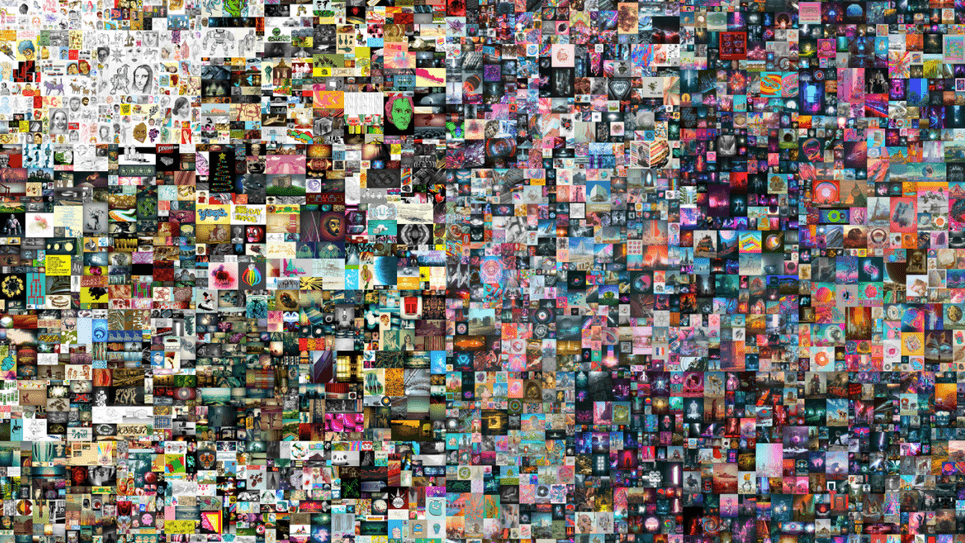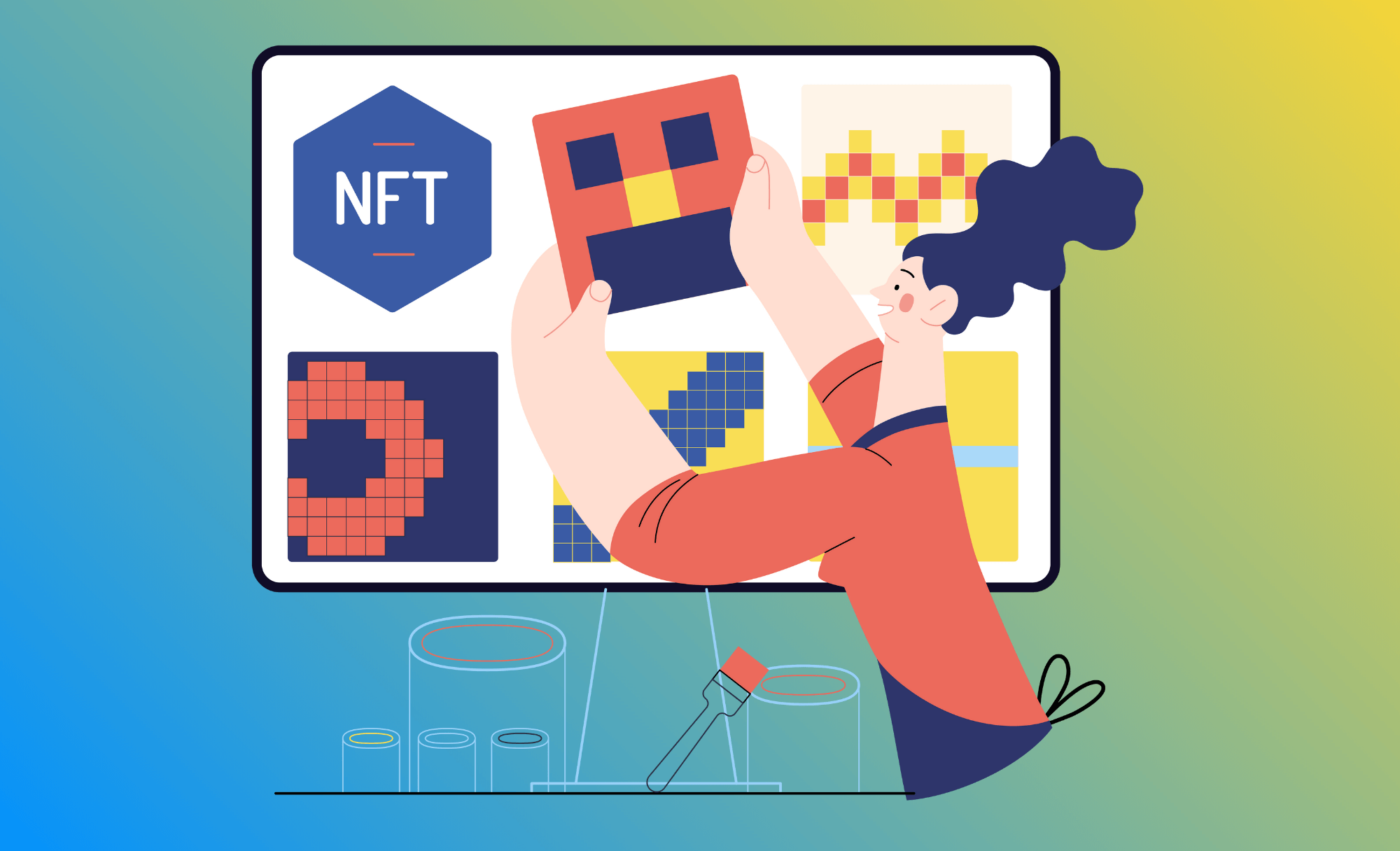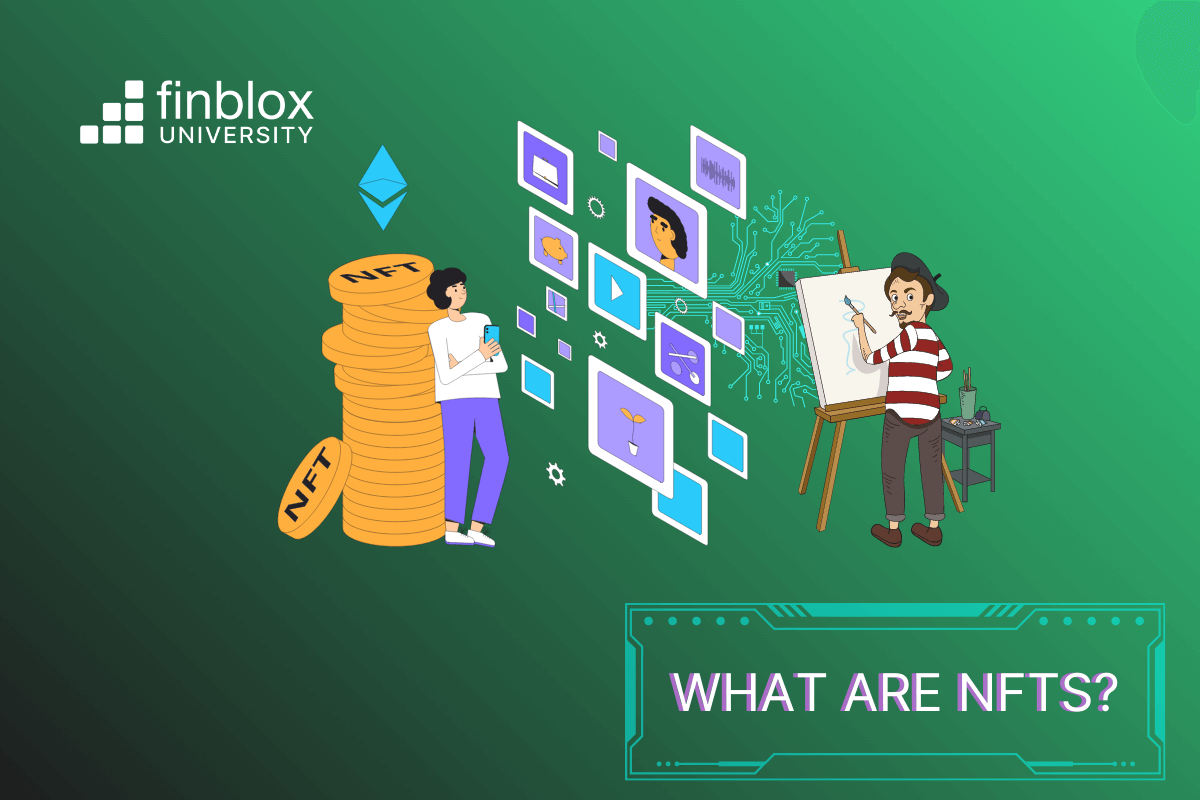Learn all about the crazy hype surrounding NFTs - including their characteristics, use cases, and how to make your own!
An NFT is a non-fungible token, meaning it has a completely unique digital signature that prevents its properties from being replicated in another token. Fungible tokens, in contrast - are identical to each other and can be exchanged for the exact same value and properties. Currency is a good example of this.
Why is this important? NFTs can be used as digital identifiers to mark ownership and reduce fraud, and to legitimize claims to real-world objects. The tokenized aspect of NFTs also allows for easy trading, while these real-world assets might otherwise be more difficult to physically exchange. We'll talk about this in the following sections.
What are the properties of NFTs?
- All NFTs are completely unique and indivisible.
- An NFT can only have one owner at a time, and this owner can be identified by their public key - which acts as a soft certificate stating ownership. The private key of this token is considered hard proof of ownership, and grants them transaction privileges.
- Every past owner and transaction of an NFT can be publicly viewed!
- A digital wallet is required to buy, own, and exchange NFTs.
- NFTs use different token standards than regular cryptocurrencies. The most popular standard is ERC-721, which uses the variable "uint256 tokenId" to pair a 256-bit number and a contract address to make the token unique. In some cases, tokenId can be converted by dApps to reveal images inside - giving rise to the popularity of NFT digital art!
What are the use cases for NFTs?
The most popular use case for NFTs is the tokenization of digital art. We first witnessed this in 2017, when Crypto Punks arrived on the scene and sold for anywhere from 300,000 to 2 million dollars! In 2021, the Bored Ape Yacht Club collection was released and achieved similar success. Since its inception, the NFT market has become worth over 40 billion dollars - with over 28.6 million actively trading wallets!
NFTs are socially significant because they mark progress towards ending the "starving artist" stereotype. Many artists are still contracted by big brands to create amazing pieces, in return for "exposure" and meager payment - if any. Meanwhile, these brands profit hugely from their work and make billions in revenue that never gets back to the artists.
Now, artists are able to sell their collections directly on marketplaces and can even benefit from royalties - which are a percentage of transactions paid to the artist every time the NFT is sold.
Another great use case for NFTs are the creation of decentralized web domains, which are less restrictive, censorship-resistant, and more secure than traditional domains. These domains can actually be used to rename complex wallet addresses, making transactions that much easier.
NFTs can also represent real-world objects like cars and property, and validate their exchange using digital signatures (the private key) without ever having to meet in person. Fractional ownership takes this one step further and allows multiple parties to pool their funds, participate, and benefit from a purchase - similar to the concept of fractional shares.
Ultimately, there are many other uses for NFTs that have yet to be discovered!

Where can I buy and sell NFTs?
By far the largest marketplace for NFTs is OpenSea - accounting for a whopping 56% of total NFT transaction volume in the world! OpenSea is a completely decentralized peer-to-peer platform that is run by smart contracts on the Wyvern protocol, and follows an atomic transaction model. Buyers and sellers must receive the NFT and funds simultaneously, or the transaction will not occur. Here are some other handy features that you should know about their platform:
- Users can browse through collections and filter by price, blockchain, and rarity
- Purchasing options include bidding, making an offer, or instant buyout
- Purchasing history of NFTs is publicly viewable
- Supports 12+ crypto wallets including Metamask and Coinbase wallet
- Accepts over 150 different tokens as payment
- 2.5% transaction fee
- OpenSea runs on Ethereum, so fees can be extraordinarily high when there is network congestion
- To combat this, OpenSea developed a Polygon-based gas-free marketplace. Creators no longer have to pay for transaction fees, and can arrange to receive royalty payments for every future sale of their NFT
- Due to high volume of traffic, the website and API often suffer from reduced performance and outages
The second largest NFT marketplace (excluding Axie Infinity and NBA Top Shot for their very niche focus) is Solanart, which was built upon the Solana blockchain. Solana is known for its very high transaction throughput, which vastly exceeds Ethereum at a blazing 50,000 TPS. There are a few other key things you should know when comparing Solanart to OpenSea:
- All transactions must be conducted in SOL, the native token of Solana
- The gas fee for SOL is infinitely lower than Ethereum, at $0.00025 per transaction!
- Collections are 100% verified by the team and safe to purchase
- However, this is a double-edged sword. Users cannot mint their own NFTs without having their collections first reviewed by the Solanart team. The submission and review process could take a lengthy amount of time
- Filtering and other features on Solanart are still far behind OpenSea
- Because Solanart just came out of beta, there are still plenty of bugs and performance issues
Our final marketplace on this list is Rarible, one of the easiest-to-use platforms for beginners and non-coders. It was founded in 2019 by Alexander Salnikov, Alexei Falin, and Ilya Komolkin - and is based on the Ethereum blockchain. Here are some of its notable selling points:
- Creators can easily upload their art and convert them into NFTs without paying upfront gas fees, using the lazy mint feature. Once a buyer has been found, they are actually responsible for paying this fee!
- RARI is the utility and governance token of Rarible that is distributed as rewards, and allows users to vote on future functions of the platform
- NFTs can be purchased with credit, debit, or Google Pay - making it incredibly accessible to fiat buyers. The only downside is that network fees still have to be paid in ETH
- 2.5% transaction fee to both the buyer and seller

How can I make my own NFTs?
In order to create an NFT collection, you first need to brainstorm ideas for your concept. There should be some kind of unified theme you have in mind - for example, gentlemanly kittens wearing different colored suits!
Next, you will need to choose an art engine or creative software to generate parts for your collection. Parts are different traits that can be swapped with one another to generate variations of the same base object. You might have kittens with red tails, blue tails, and green tails - or wearing different-shaped eyewear. In any case, the art engine will allow you to manually choose and even randomize combinations of each part! Make sure that each layer fits properly on top of the other so that there are no strange overlaps (i.e., a pair of eyeballs floating in front of sunglasses when they should be tucked underneath instead).
The most popular and easy to use art engines are NFT Creator, Krita, Inkscape, and SuperMe - while Adobe Illustrator and Photoshop are excellent enterprise tools for more advanced creators.
Finally, you will need to choose an NFT marketplace to upload and mint your NFT - that is, turn it into a tokenized form that can be passed between wallets! You will also need to pair your wallet with the marketplace to store the NFT once it is created. Sometimes, you will be charged creator fees for minting an NFT - but most recently, several platforms offer the lazy minting feature which does not require your NFT to be "written" to the blockchain until it is purchased. Instead, the buyer will have to pay all gas fees along with the cost of your art.
Congratulations! You have now successfully created and sold your first NFT, and are free to transfer the resulting funds to another wallet or cash out using an exchange. Keep in mind that this kind of digital art only covers one medium - NFTs can also come in the form of music, videos, in-game items, and more!
The Takeaway:
Whether you buy into the craze of creating and selling online digital art, or belong to the skeptical "right click download image" crowd - NFTs provide a little something for everyone to benefit from. Here at Finblox, we don't quite have an NFT marketplace - but we do offer amazing yields on tokens that are commonly used in the purchase of NFTS such as ETH, AXS, SOL, MATIC, and more! Check out our rates and download our app here.
Thanks for reading! Please subscribe if you haven't already - and stay tuned for our next article, which will reveal the workings behind the mysterious decentralized autonomous organizations only known as DAOs!
This content is provided for informational purposes only, and should not be relied upon as legal, business, investment, or tax advice. You should consult your own advisers as to those matters. Charts, graphs and references to any digital assets are for informational and illustrative purposes only.



